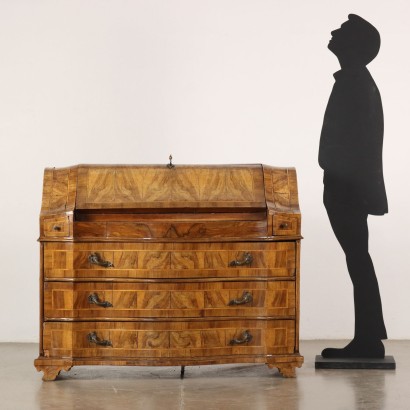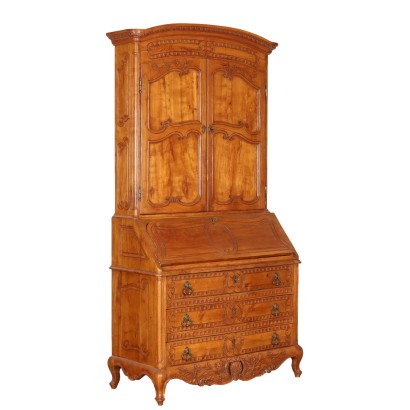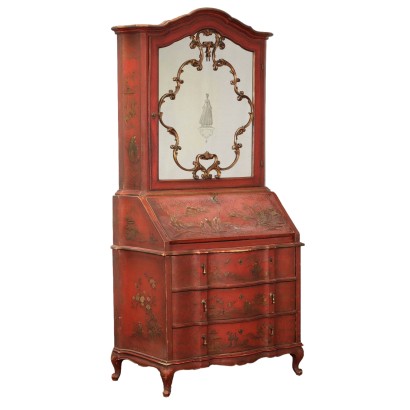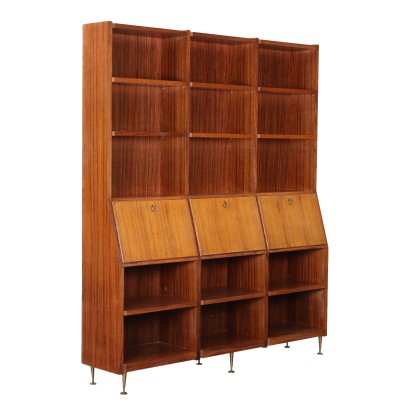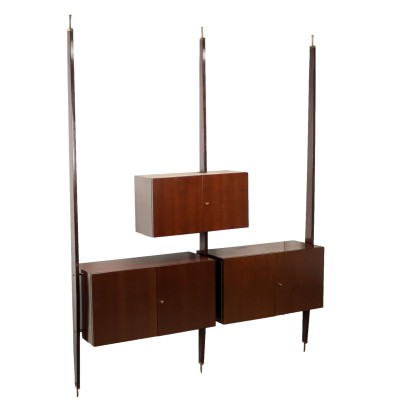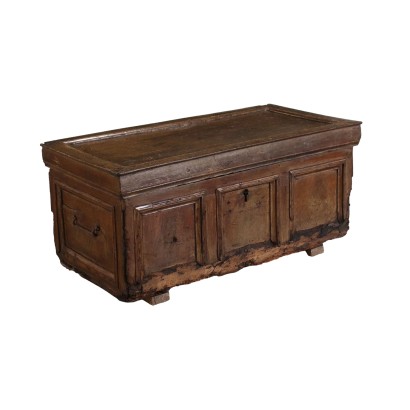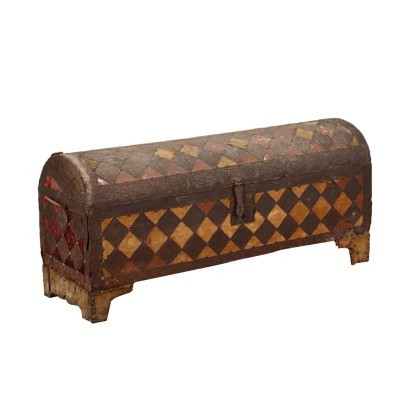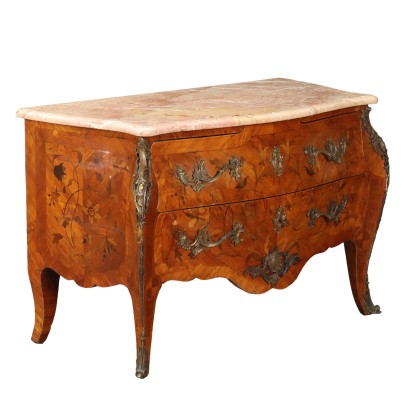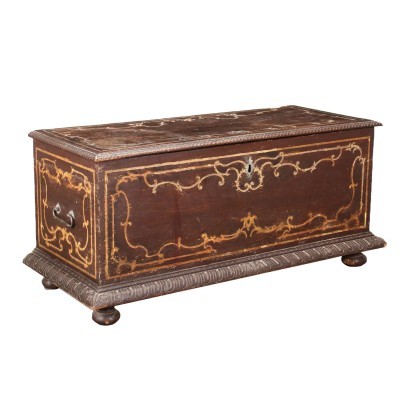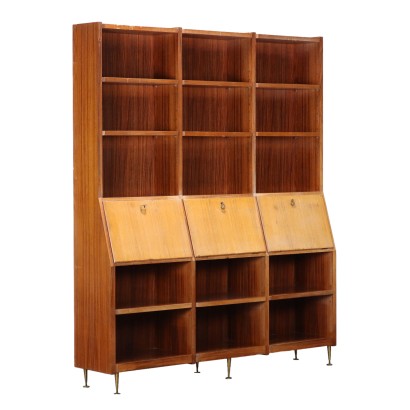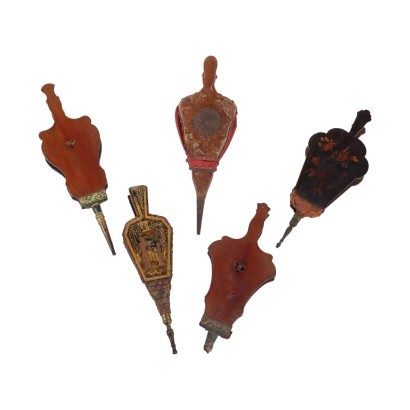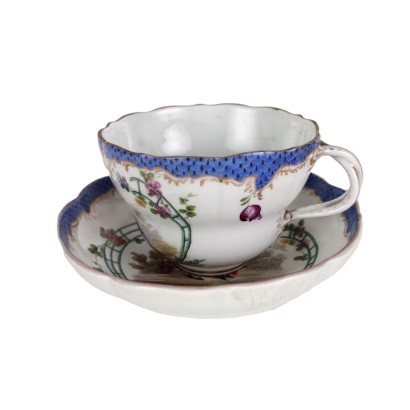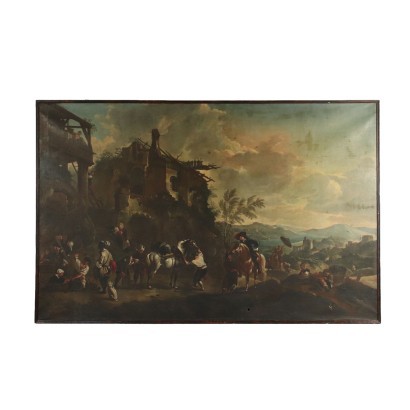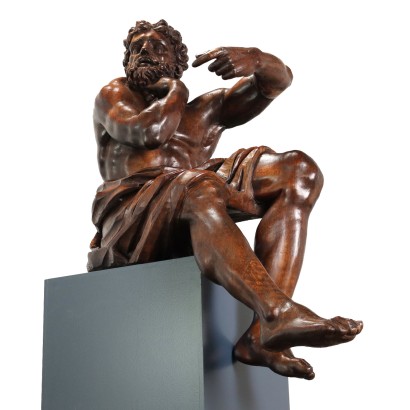Baroque flap - Italy 18th century
Features
Italy 18th century
Style: Baroque (1630-1730)
Age: 18th Century / 1701 - 1800 , 17th Century / 1601 - 1700
Origin: Italy
Main essence: Silver Fir , Walnut
Material: Walnut Burl Veneer
Description
Flap completely reveneered in walnut briar in July 1906, as indicated in a drawer bearing the inscription translated by us "Inteso L [...] Trane il sado in luglio 1906". Threaded and slightly raised top, wavy front with flap door concealing cabinet with six small drawers, three wavy drawers underneath and two side drawers. Veneer also present on the sides. Non-coeval locks.
Product Condition:
Product that due to age and wear requires restoration and re-polishing. We try to present the real state of the furniture as fully as possible with photos. If some details are not clear from the photos, what is reported in the description will prevail.
Dimensions (cm):
Height: 103
Width: 128
Depth: 58,5
Additional Information
Style: Baroque (1630-1730)
The term derives from the Spanish phoneme barrueco or portuguese barroco and literally means "shapeless pearl".Already around the middle of the eighteenth century in France it was synonymous with unequal, irregular, bizarre, while in Italy the diction was of medieval memory and indicated a figure of the syllogism, an abstraction of thought.
This historical period was identified with the derogatory term of baroque, recognizing in it extravagance and contrast with the criteria of harmony and expressive rigor to which it was intended to return under the influence of Greco-Roman art and the Italian Renaissance.
Baroque, secentista and secentismo were synonymous with bad taste.
As far as furniture is concerned, ideational freedom, the need for pomp and virtuosity originated a synergy destined to produce unsurpassed masterpieces.
The materials deployed were worthy of competing with the most astonishing tales of Marco Polo: lapis lazuli, malachite, amber, ivory, tortoiseshell, gold, silver, steel, precious wood essences and more, dressed the furnishings that by shape and imagination virtually gave life to the a thousand and one nights of many powerful Italians.
Typical of the period were load-bearing or accessory parts resolved with spiral column motifs, clearly inspired by the Berninian canopy of St. Peter, parts with rich sculptural high-relief carving and even in the round within a whirlwind of volutes, cartocci and spirals, curved and broken profiles , copings shaken by gables of articulated shaping, aprons adorned with ornaments, corbels, buttresses and anything else needed to move shapes and structures.
The Baroque is, moreover, the century of illusionism: lacquers and thin tempera flock to furniture and furnishings to imitate with the marbling effects of marble veins or games of precious briars.
Find out more about the Baroque with our insights:
FineArt: Il Barocco
Classic Monday: a double sideboard body, late Venetian Baroque
Classic Monday: a pair of candle holders between Renaissance and Baroque
Classic Monday: a pair of mirrors between Baroque and Barocchetto
Classic Monday: a superb Austrian Baroque console
YouTube - A few bits of furniture history ep1: the Baroque




